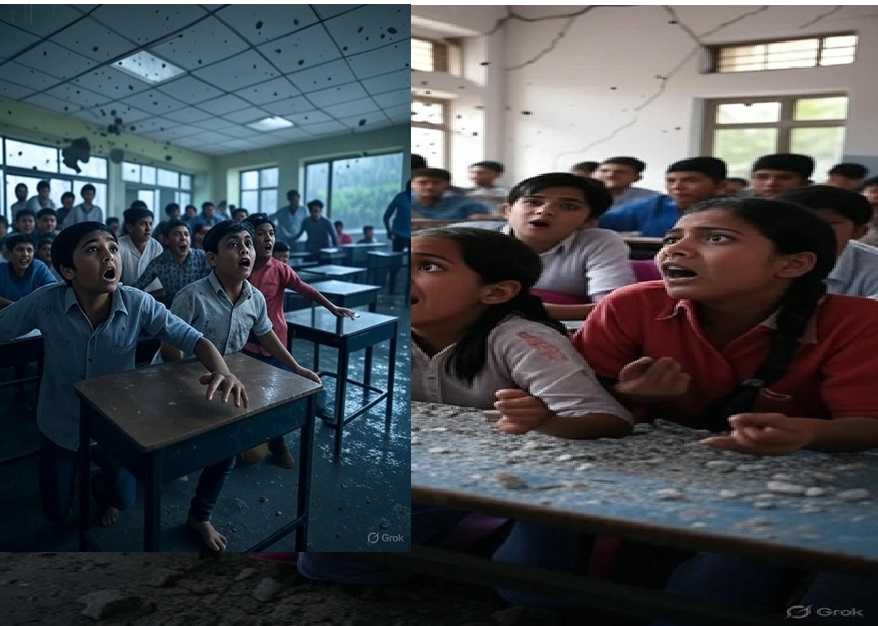
Addressing School Infrastructure Failures in India – A Case Study of the Jhalawar School Collapse
Preventing School Ceiling Collapses: Lessons from the Jhalawar Tragedy
Introduction
On July 25, 2025, a devastating ceiling collapse at Piplodi Government Upper Primary School in Jhalawar, Rajasthan, claimed the lives of seven children and injured 21 others. This tragedy, exacerbated by heavy rainfall and a 35-year-old dilapidated structure, exposed critical gaps in school safety regulations and the underutilization of the Unified District Information System for Education (UDISE) data. This article explores the incident, outlines safety regulations, and provides actionable guidelines to prevent future occurrences.
Mandatory to conduct audit of safety in schools: Govt tells states, UTs
The Jhalawar Incident: A Wake-Up Call
The collapse occurred during morning prayers, with students reporting falling debris moments earlier—warnings ignored by the school staff. Media outlets like *The Hindu* and *Reuters* highlighted systemic negligence, including unaddressed repair requests and poor maintenance. Responsibility spans school administration, local authorities, and the state education department, which failed to act on available UDISE data indicating repair needs.
School Safety Regulations in India
Key regulations include:
- NDMA Guidelines (2021): Require biennial structural audits and School Disaster Management Plans (SDMPs).
- Right to Education Act (2009): Mandates safe learning environments.
- UDISE: Tracks infrastructure data for planning, though often underused.
- Rajasthan Rules: Demand annual safety certifications, yet enforcement lags.
- Guidelines on School Safety and Security
Strengthening compliance through regular audits and funding is essential.
Guidelines to Prevent Future Incidents
To safeguard students, schools should:
- Conduct annual safety audits with certified engineers.
- Allocate dedicated budgets for proactive maintenance.
- Leverage UDISE data for repair prioritization.
- Train staff in safety assessments and emergency response.
- Engage communities for issue reporting.
- Conduct regular emergency drills.
- Enforce NDMA compliance with penalties for negligence.
Integrating UDISE with real-time monitoring can ensure transparency and action.
Frequently Asked Questions (FAQs)
What are the key guidelines to prevent classroom ceiling collapses?
The key guidelines include conducting annual structural safety audits, ensuring proactive maintenance with dedicated budgets, leveraging UDISE data for planning, training staff in safety assessments, engaging communities for reporting issues, conducting emergency drills, and enforcing compliance with NDMA safety standards.
Who is responsible for implementing these guidelines?
Implementation involves school administrations, district education authorities, state education departments, and local bodies. Certified engineers should conduct audits, while officials must ensure funding and accountability.
How can UDISE data help prevent such incidents?
UDISE data can identify schools with old or damaged buildings by mapping their age and condition. This enables prioritization of repairs, allocation of funds, and integration with safety audits to address risks proactively.
Why is regular maintenance important?
Regular maintenance prevents deterioration from factors like heavy rainfall or structural wear, as seen in the Jhalawar incident. It ensures timely repairs to roofs, ceilings, and walls, reducing collapse risks.
What should schools do during heavy rainfall?
Schools should monitor building conditions, avoid using at-risk classrooms, and evacuate students if signs of damage (e.g., cracks, water seepage) are observed. Emergency plans should be activated as per NDMA guidelines.
Can these guidelines guarantee no future incidents?
While no absolute guarantee exists, consistent implementation of audits, maintenance, and data use can significantly reduce risks. The focus must be on prevention and rapid response to minimize harm.
Concluding Observations
The Jhalawar tragedy underscores the urgent need to enforce school safety regulations and utilize UDISE data effectively. By implementing the outlined guidelines, India can transform its government schools into safe learning environments, preventing future losses and honouring the lives lost on July 25, 2025.


